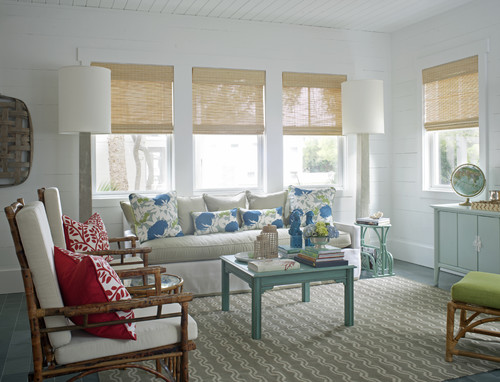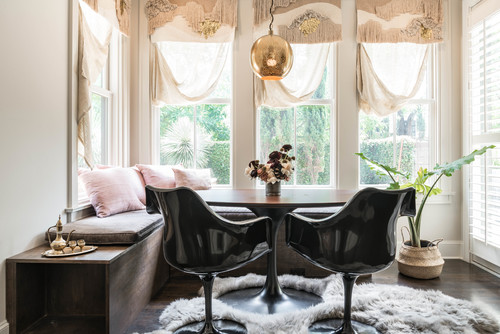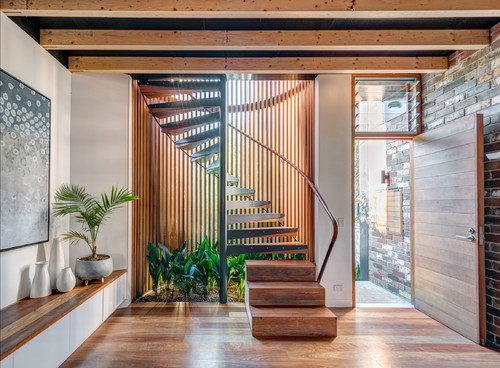These days, it seems like everyone’s looking for ways to cut costs and stretch their income further. Fortunately, there are some simple steps you can take to reduce your household expenses without making radical changes to your standard of living. When combined, these small adjustments can add up to significant savings each month.
Here are 20 things you can start doing today to lower your bills, secure better deals, and begin working toward your financial goals.
Refinance Your Mortgage – For prime borrowers, mortgage rates are at or near historic lows. Depending on your current mortgage rate and the terms you choose, refinancing could save you a sizable amount on your monthly payments. There are fees and closing costs associated with refinancing, so you’ll need to talk to your lender to find out if refinancing is a good option for you.
Evaluate Your Insurance Policies – If it’s been a while since you priced home or auto insurance, it may be worthwhile to do some comparison shopping. Get quotes from at least three insurers or independent agents. Try bundling your policies to see if there’s a discount. And inquire about raising your deductible, which should lower your premium.1
Bundle Cable, Phone, and Internet – You can also save money by bundling your cable, phone, and internet services together. Shop around to see who is willing to give you the best deal. If switching is too much of a hassle, ask your current provider to match or beat their competitor’s offer.
Better Yet, Cut the Cord on Cable – In many cases, you can save even more if you cancel your cable subscription altogether. An antenna should give you access to the major stations, and many of your favorite shows are probably available on-demand through a less expensive streaming service subscription.
Revisit Your Wireless Plan – You can often save by switching from a big brand to an independent, low-cost carrier. If that’s not feasible, ask your current provider for a better deal or consider downgrading to a cheaper plan. Also, check with your cable provider. Many of these companies now have cell phone plans too. I switched to Comcast/Xfinity and have saved a bunch.
Adjust Your Thermostat – Turning your thermostat up or down a few degrees can have a noticeable impact on your monthly heating and cooling costs. To maximize efficiency, change your filters regularly, and make sure your windows and doors are well insulated.
Use Less Hot Water – After heating and cooling, hot water accounts for the second largest energy expense in most homes.2 To cut back, repair any leaks or dripping faucets, install low-flow fixtures, only run your dishwasher when full, and wash clothes in cold water when possible.
Lower Overall Water Consumption – To decrease your water usage, take shorter showers, and turn off the sink while you brush your teeth and wash your hands. If you don’t have a low-flow toilet, retrofit your current one with a toilet tank bank or fill cycle diverter. And irrigate your lawn in the morning or evening to minimize evaporation.3
Conserve Electricity – Save electricity by shutting off your computer at night and installing energy-efficient LED light bulbs. You can minimize standby or “vampire” power drain by utilizing power strips and unplugging idle appliances.4
Purchase a Home Warranty – While there is an upfront cost, a home warranty can provide some protection and peace of mind when it comes to unexpected home repair costs. Most plans provide coverage for major systems (like electrical, plumbing, and HVAC) and appliances (such as your dishwasher, stove, or refrigerator).
Outsource Less – From lawn care to grocery shopping to minor home repairs, we pay people to do a lot of things our parents and grandparents did themselves. To save money, try cutting back on the frequency of these services or taking some of them on yourself.
Prepare Your Own Meals – It costs nearly five times more to have a meal delivered than it does to cook it at home.5 And home cooking doesn’t just save money; it’s healthier, cuts down on calorie consumption, and can offer a fun activity for families to do together.
Plan Your Menu in Advance – Meal planning is deciding before you shop what you and your family will eat for breakfast, lunch, and dinner. It can help you lower your overall food bill, eliminate waste, and minimize impulse purchases. When possible, buy produce that is in season, and utilize nutrient-rich but inexpensive protein sources like eggs, beans, ground turkey, and canned tuna.
Plant a Garden – You can save even more on produce by growing it yourself. If you have space in your yard, start-up costs are relatively minimal. Gardening can be a rewarding and enjoyable (not to mention delicious) hobby for the whole family. And it could save you around $600 per year at the grocery store!6
Review Memberships and Subscriptions – Are you paying for services and subscriptions you no longer need, want, or can utilize? Determine if there are any that you should suspend or cancel.
Give Homemade Gifts – Who wouldn’t appreciate a scratch birthday cake or tin of cookies? And if you enjoy crafting, Pinterest and Instagram are full of inspiring ideas. Show your recipient how much you care with a homemade gift from the heart.
Minimize Your Debt Payments – The best way to reduce a debt payment is to pay down the balance. But if that’s not an option right now, try to negotiate a better interest rate. If you have a good credit score, you may be able to qualify for a balance transfer to a 0% or low-interest rate credit card. Keep in mind, the rate may expire after a certain period—so be sure to read the fine print.
Get a Cash-back Credit Card – If you regularly pay your credit card balance in full, a cash-back credit card can be a good way to earn a little money back each month. However, they often come with high-interest rates and fees if you carry a balance. Commit to only using it for purchases you can afford.
Ask for Deals and Discounts – It may feel awkward at first, but becoming a master haggler can save you a lot of money. Many companies are willing to negotiate under the right circumstances. Always inquire about special promotions or incentives. See if they are able to price match (or beat) their competitors. And if an item is slightly defective or nearing its expiration date, ask for a discount.
Track Your Household Budget – One of the most effective ways to reduce household expenses is to set a budget—and stick to it. A budget can help you see where your money is going and identify areas where you can cut back. By setting reasonable limits, you’ll be able to reach your financial goals faster.
Want more help getting a handle on your finances? Use the budget worksheet below to track income and expenses—and start working towards your financial goals today! Please reach out to me for a downloadable version.
| HOUSEHOLD BUDGET WORKSHEET | |||
| Expected | Actual | Difference | |
| HOUSING | |||
| Mortgage/taxes/insurance or Rent | |||
| Utilities (electricity, water, gas, trash) | |||
| Phone, internet, cable | |||
| Home maintenance and repairs | |||
| FOOD | |||
| Groceries | |||
| Restaurants | |||
| TRANSPORTATION | |||
| Car payment/insurance | |||
| Gas, maintenance, repairs | |||
| OTHER | |||
| Health insurance | |||
| Clothing and personal care | |||
| Childcare | |||
| Entertainment | |||
| Gifts and charitable contributions | |||
| Savings, retirement, college fund | |||
| INCOME | |||
| Salary/wages | |||
| Tips and other | |||
| MONTHLY TOTALS | |||
| Total Actual Income | |||
| Total Actual Expenses | |||
| ADDITIONAL SAVINGS | |||
I’M HERE TO HELP
I would love to help you meet your financial goals. Whether you want to refinance your mortgage, save up for a down payment, or simply find lower-cost alternatives for home repairs, maintenance, or utilities, I am happy to provide my insights and referrals. And if you have plans to buy or sell a home this year, I can discuss the steps you should be taking to prepare financially. Contact me today to schedule a free consultation!
The above references an opinion and is for informational purposes only. It is not intended to be financial advice. Consult a financial professional for advice regarding your individual needs.
Sources:
- Insurance Information Institute –
https://www.iii.org/article/twelve-ways-to-lower-your-homeowners-insurance-costs - Department of Energy –
https://www.energy.gov/energysaver/water-heating/reduce-hot-water-use-energy-savings - Money Crashers –
https://www.moneycrashers.com/ways-conserve-water/ - Harvard University –
https://green.harvard.edu/tools-resources/poster/top-5-steps-reduce-your-energy-consumption - Forbes –
https://www.forbes.com/sites/priceonomics/2018/07/10/heres-how-much-money-do-you-save-by-cooking-at-home/#2c53b2f35e54 - Money –
https://money.com/gardening-grocery-savings/













